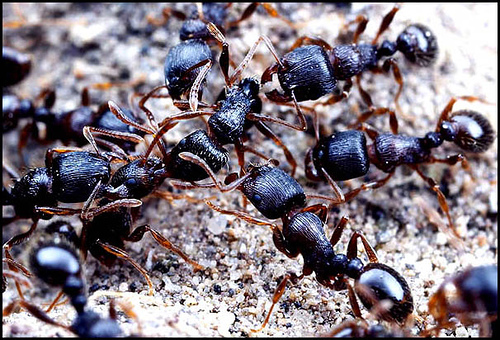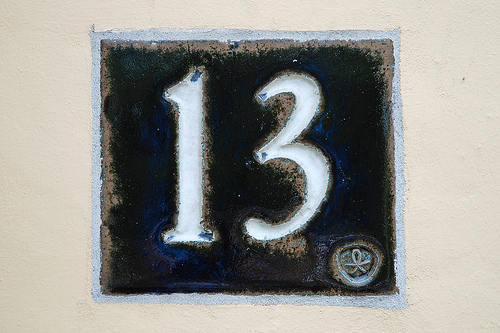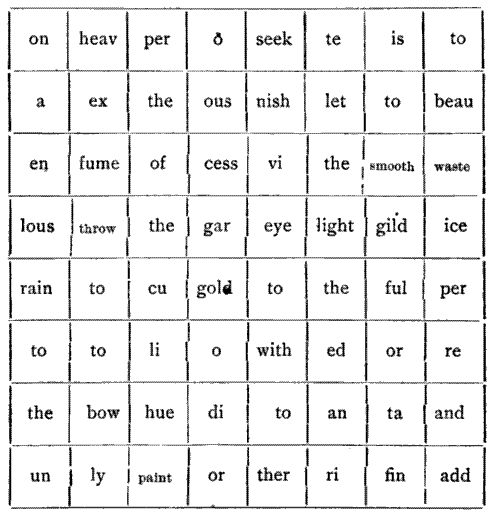swedge
v. to leave without paying one’s bill
Guess
Once upon a time, there lived a rich farmer who had 30 children, 15 by his first wife who was dead, and 15 by his second wife. The latter woman was eager that her eldest son should inherit the property. Accordingly one day she said to him, “Dear Husband, you are getting old. We ought to settle who shall be your heir. Let us arrange our 30 children in circle, and counting from one of them, remove every tenth child until there remains but one, who shall succeed to your estate.”
The proposal seemed reasonable. As the process of selection went on, the farmer grew more and more astonished as he noticed that the first 14 to disappear were children by his first wife, and he observed that the next to go would be the last remaining member of that family. So he suggested that they should see what would happen if they began to count backwards from this lad. She, forced to make an immediate decision, and reflecting that the odds were now 15 to 1 in favour of her family, readily assented. Who became the heir?

— W.W. Rouse Ball, Mathematical Recreations & Essays, 1892
Cry Havoc

Only ants and men make war on a large scale.
“A Glutton”
Titus Angles of Darlington, has again shewn symptoms of a voracious appetite, by devouring five pounds and a half of old bacon, nauseous to the extreme. After finishing his repast he was taken in triumph round the town in a cart, and afterwards ducked in the Skerne.
— “Durham Paper,” cited in The Cabinet of Curiosities, 1824
Avoiding a Scandal

Three beautiful women and their jealous husbands want to cross a river, but the boat will hold only two people at a time. How can they arrange the crossing if no woman is to remain with a man unless her husband is present?
Wile E. Coyote
Species designations for Wile E. Coyote:
- Famishus vulgarus
- Eatius slobbius
- Hardheadipus oedipus
- Carnivorous slobbius
- Evereadii eatibus
- Apetitius giganticus
- Hungrii flea-bagius
- Overconfidentii vulgaris
- Caninus nervous rex
- Grotesques appetitus
- Nemesis ridiculii
Chuck Jones said, “Wile E. is my reality, Bugs Bunny is my goal.”
Great

The 13th day of the month is most likely to fall on a Friday.
A Literary Knight’s Tour
The knight’s tour is a recreation familiar to chessplayers: Move a knight about an empty chessboard so as to visit each square exactly once.
On this board, each square contains a syllable. Collect them in the right order and you’ll compose a six-line quotation from Shakespeare. What is it?
(Hint: Start on e4, “to”.)

Here … Kitty
In July 1891, lightning struck the house of a Mr. Arent S. Vandyck of New Salem, Vt. He submitted this account to a Boston newspaper:
Suddenly the younger Mr. Vandyck [his son] pointed to an old-fashioned sofa. Upon it lay what was apparently the silver image of a cat curled up in an exceedingly comfortable position. Each glittering hair was separate and distinct, and each silvery bristle of the whiskers described a graceful curve as in life. Father and son turned towards the sword which hung upon the wall just above the sofa and there saw that the sword had been stripped of all its silver. The hilt was gone, and the scabbard was but a strip of blackened steel. The family cat had been electroplated by lightning.
Draw your own conclusions.
Unless You Lisp
The hardest English tongue twister, according to author William Poundstone:
“The seething sea ceaseth and thus the seething sea sufficeth us.”
